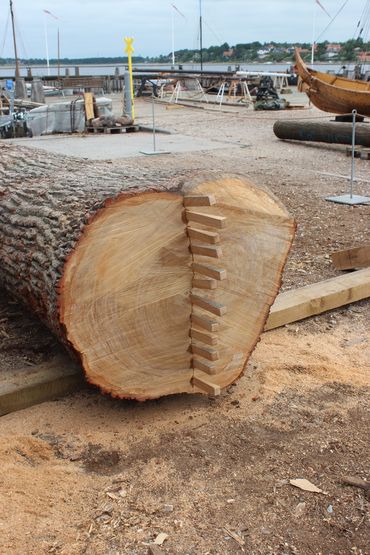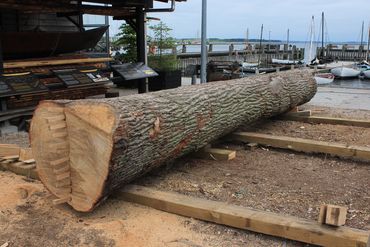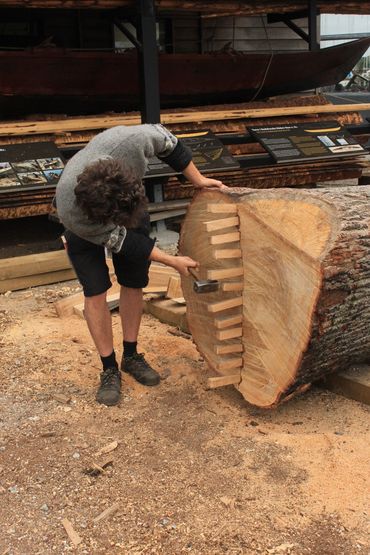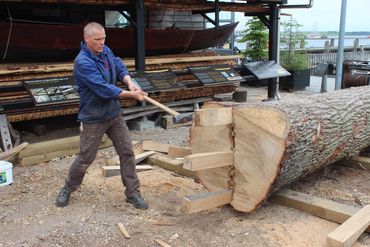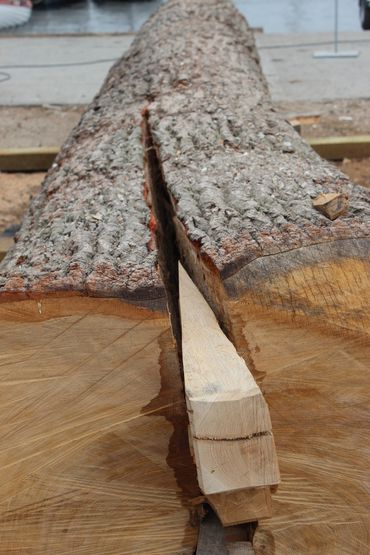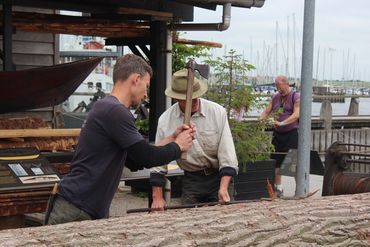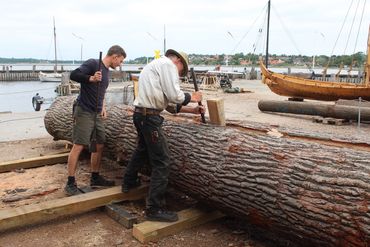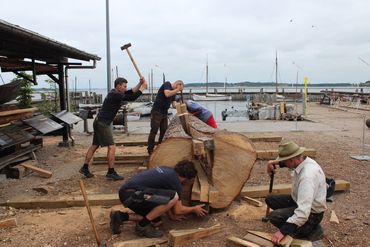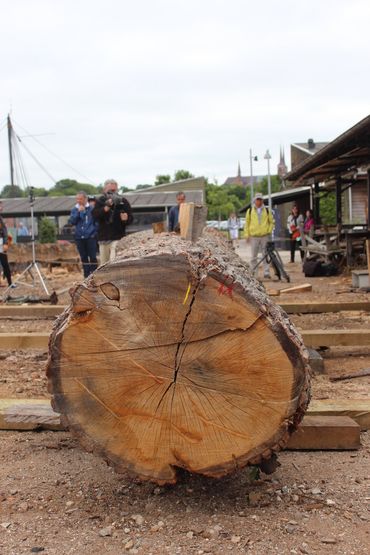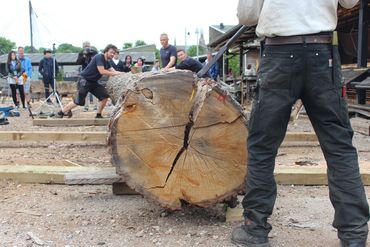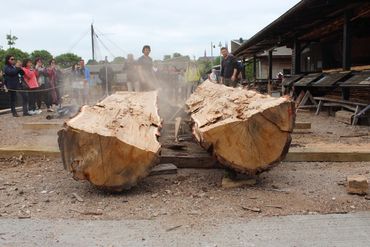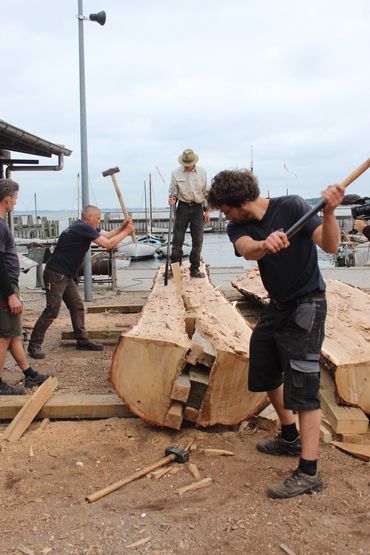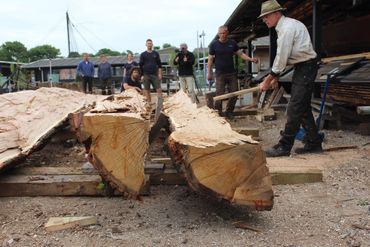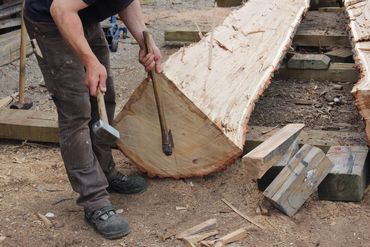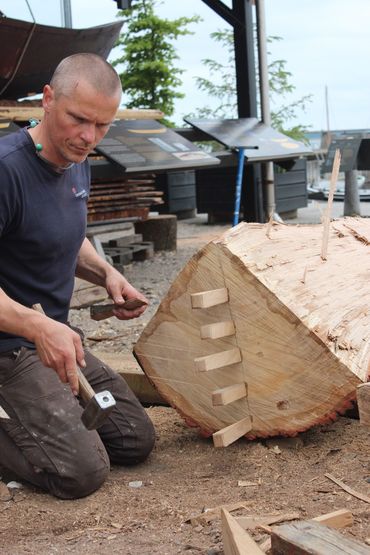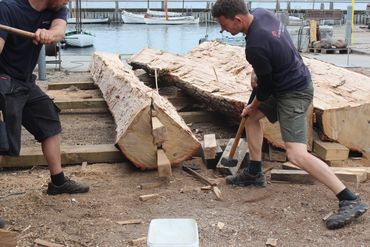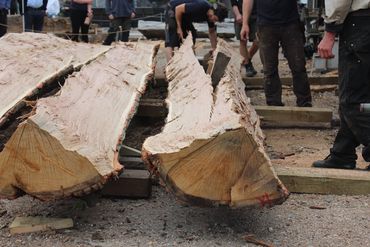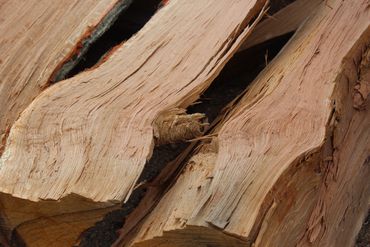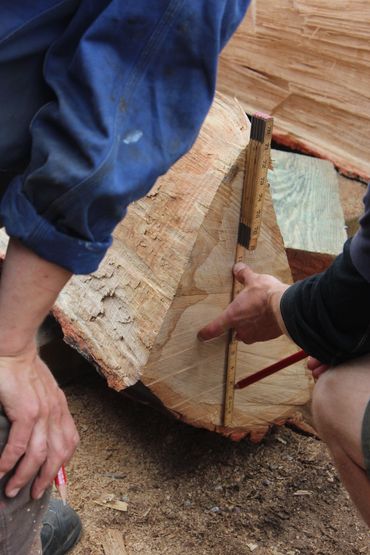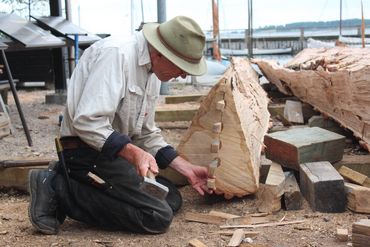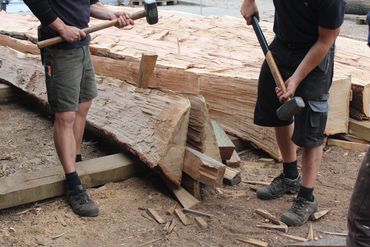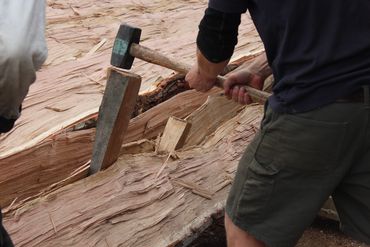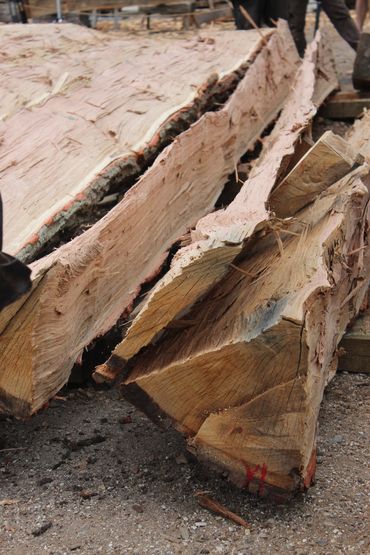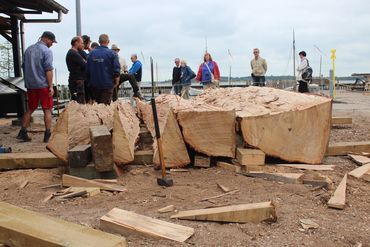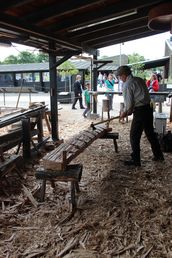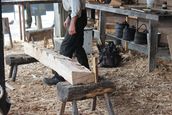The cleaved plank
The saw was not used when making planks in the Viking Age. Instead, planks were cleaved as illustrated to the right. When cleaving planks for boatbuilding, it is important to find the right tree in the forest with the necessary dimensions and quality. The tree must be straight-growing and knot-free, and it must be big.
The outer sapwood - which is lighter in colour - rots too quickly and cannot be used, and the centre of the trunk (pith) grows irregularly, so that must also be cut away. Therefore, the tree essentially needs to be oversized. If many broad planks are required, then the diameter must be increased.
In an oak tree, the pith rays (see illustration to the right) extend from the pith to the tree’s outer edge, just like spokes on a bicycle wheel. When oak is cleaved, it splits along both these pith rays and the tree’s own fibres. If the tree is twisted, the cleaving will also follow this twist. Usually, you can tell if the fibres are twisted or straight-growing by looking at the bark.
When boatbuilding, a straight-growing tree is always optimal, as it is easier to produce planks with an even thickness if the cleaved sections aren’t twisted. However, a twisted plank still has the same strength, so long as the fibres are not cut over in an attempt to straighten the plank.
After cleaving, the pieces are roughly shaped with an axe. The planks are then smoothed using a broad-bladed axe, the long edge of which serves to even out the surface of the planks. On some boats, tool marks from axes can be seen while others bear traces of the use of planes. A plank is called a board when it is placed on a boat.
Cleaving oak for Gislinge III
Production of the planks began at the start of June, with the cleaving of the oak. The initial cleave into halves went smoothly and took just 50 minutes from start to finish. The work then continued splitting the halves further into quarters, eights and finally sixteenths. Occasionally, with a very large oak, it can possible to cleave down to thirty-two parts, but that wasn’t the case this time.
By clicking on the images, you can follow the process from start to finish.
Some of the cleaved pieces were roughed out by cutting scores and removing the joggles in between, while others were thin enough to just begin hewing straight away. As Gislinge III was built as a reconstruction of an archaeological find, there were specific parameters that had to be respected when building the boat. The dimensions – and in some cases, the shape – of the planks was dictated by the surviving planks on the original boat, so the boatbuilders had very specific measurements to match.
